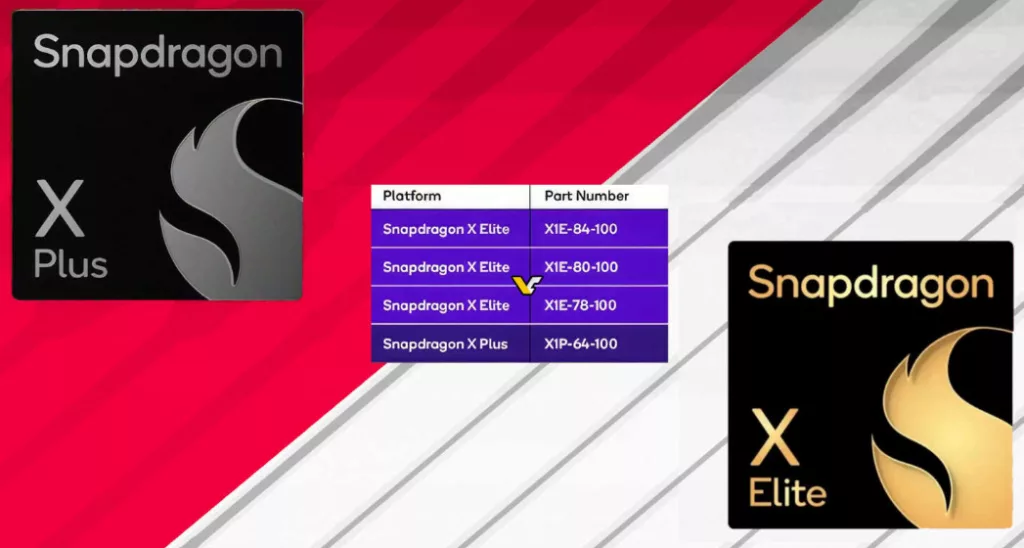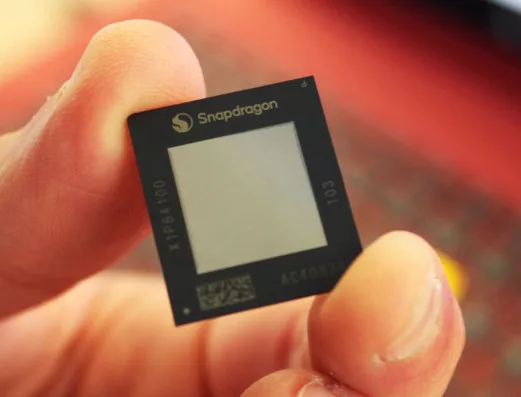Qualcomm announced that it has completed its Snapdragon X series processor, which includes four chipsets from two SoC platforms: the Snapdragon X Elite, and Snapdragon X Plus.
In this series, the nomenclature of Snapdragon X Elite and Snapdragon X Plus processors further explains variants, benchmark scores, etc. The Snapdragon X series includes four processors and two SoC platforms: Snapdragon X Elite and Snapdragon X Plus. Snapdragon X Elite has three SKUs, and the Snapdragon X Plus has one SKU. The SKUs of each platform are the following:

More About Snapdragon X Elite and X Plus
For example, Snapdragon X Plus or X1P-64-100 would have a naming style where, ‘X’ means it is of the X series, ‘1’ means that this is Qualcomm’s first Oryon-based PC chipset, called Plus; P — SKU, different for every processor; and 100 — variation, which remains the same throughout all the processors. The SKU differences are mostly regarding the CPU core clock. However, Qualcomm has not shared the official TDP numbers for these processors.

Next is the difference between Snapdragon X Elite and Snapdragon X Plus Processors. As mentioned earlier, all four of these series share the ‘Hexagon NPU’, which has horsepower performance of up to 45 TOPS, regardless of the tier. Additionally, they support LPDDR5x memory and PCIe 4.0/UFS 4.0 storage, with a consistent memory bandwidth of 135 GBps across all chipsets. Unlike Apple, Qualcomm maintains consistent memory/storage speeds across different-tier chipsets. Elite tier chipsets boast 12 CPU cores, while the Plus tier chipset has 10 CPU cores.
The highest-tier processor in the Snapdragon X Elite lineup, X1E-84-100, boasts 12 Oryon CPU cores with a total of 42MB of system-level cache, which boosts dual cores to 4.2GHz and allows up to 3.8GHz at maximum multithreaded frequency.

This chipset’s CPU frequency exceeds that of Apple’s M3 lineup, and it also includes an Adreno GPU that supports 4.6 TFLOPs as well as an NPU that supports 45 TOPS. Snapdragon X Plus, X1P-64-100, shares similar specifications with its nearest Elite tier variant, X1E-78-100, but the number of CPU cores drops to 10.
As for the benchmark scores, Qualcomm provided official Snapdragon X Elite and Snapdragon X Plus scores, preempting its performance versus Apple M3 and M2 iterations. It is noted that the Oryon CPU core is clearly lagging behind Apple’s high-performance cores inside the M3 in single-core tests. However, Snapdragon X series processors have a highly competitive multi-core performance level and Snapdragon X Plus will become a fast and power-efficient alternative for the target audience.






